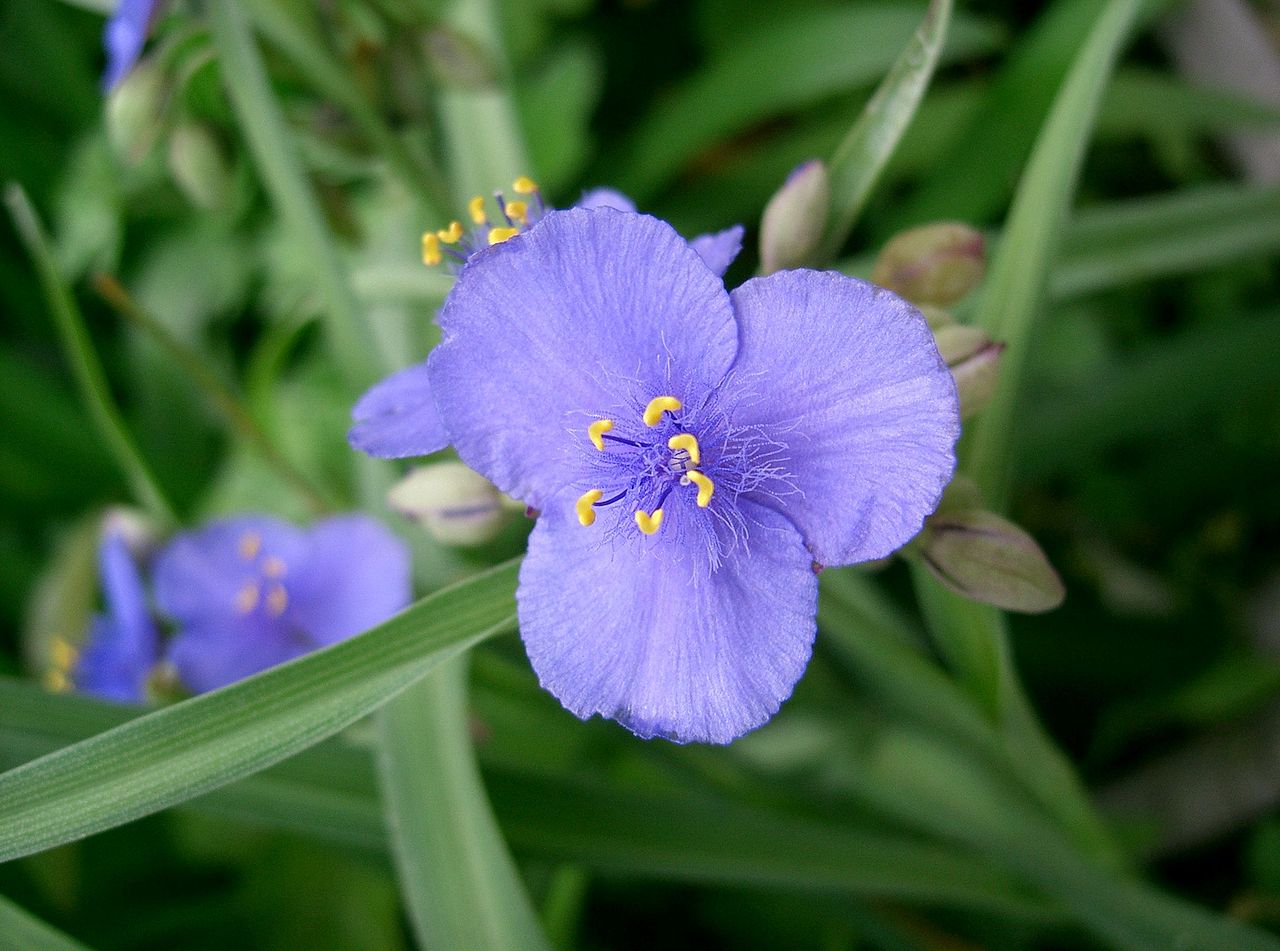Ohio Spiderwort (Tradescantia ohiensis) is a graceful, clump-forming perennial native to prairies and open woodlands across the Midwest. With its arching, grass-like foliage and delicate clusters of three-petaled violet-blue flowers, Spiderwort adds a soft, naturalistic touch to borders, cottage gardens, and native-plant landscapes. This spring-to-early-summer bloomer not only provides weeks of color but also attracts bees and butterflies, making it a valuable addition for gardeners seeking both beauty and biodiversity.
Key Characteristics
-
Flowering
-
Blooms from late May through July
-
Flowers open in the morning and often close by afternoon
-
Petals: three broad, triangular, violet-blue with yellow stamens
-
-
Foliage & Habit
-
Basal clumps of narrow, arching leaves (12–24″ tall)
-
Grass-like blades folded along the midrib, giving an elegant, upright texture
-
Mature clump spreads to about 18–24″ across
-
-
Seasonal Interest
-
Striking flower display in late spring/early summer
-
Attractive seed pods follow, adding textural interest
-
Foliage remains attractive through summer; may benefit from a cut-back if foliage flags in late season
-
Cultural Requirements
-
Light
-
Thrives in full sun to light shade
-
In hot afternoon sun (zones 5–7), morning sun with afternoon shade helps preserve flower longevity
-
-
Soil
-
Prefers moist, well-drained soil
-
Tolerates average garden soil; benefits from organic matter
-
Avoid waterlogged conditions—good drainage is essential
-
-
Water
-
Keep soil evenly moist during establishment
-
Once established, moderately drought-tolerant but performs best with supplemental water in dry spells
-
Mulch around clumps to conserve moisture and suppress weeds
-
-
Hardiness
-
USDA Zones 4–8
-
Cold-hardy to –30°F; foliage may die back in winter and reemerge in spring
-
Landscape Uses & Companion Plants
-
Naturalized Meadows & Pollinator Gardens
-
Combine with native grasses (e.g., Little Bluestem, Sporobolus heterolepis) for a prairie effect
-
Mix with other spring-blooming natives: Coneflower (Echinacea purpurea), Wild Bergamot (Monarda fistulosa), and Black-eyed Susan (Rudbeckia hirta)
-
-
Cottage & Cutting Gardens
-
Pair with soft-textured perennials like Astilbe, Foxglove (Digitalis purpurea), and Salvia
-
Use in mixed borders to bridge early-season shrubs and midsummer perennials
-
-
Containers & Small Spaces
-
Plant in troughs or large pots with companions such as Heuchera ‘Palace Purple’ or Dianthus barbatus
-
Provide height and a delicate, airy presence
-
Seasonal Care & Maintenance
-
Division & Planting
-
Divide every 3–4 years in early spring or fall to rejuvenate clumps and maintain vigor
-
Space divisions 18–24″ apart to allow room for growth
-
-
Deadheading & Cleanup
-
Remove spent flowers to encourage tidier appearance; note that new blooms tend to open daily for several weeks
-
In autumn, cut back dead foliage to ground level after the first hard frost
-
-
Fertilization
-
Apply a balanced, slow-release granular fertilizer in early spring as new growth emerges
-
Avoid overfertilizing, which can lead to floppy growth
-
-
Pest & Disease Management
-
Generally pest-free; watch for slugs in damp conditions
-
Good air circulation minimizes risk of powdery mildew—avoid overhead watering
-
-
Winter Protection
-
In colder zones, add a light layer of mulch over the crown after ground freezes to insulate roots
-
Remove mulch in early spring to prevent rot
-
Why We Love Spiderwort at Heritage Hill Nursery
-
Low-Maintenance Beauty: With minimal pruning and moderate water needs, Spiderwort rewards gardeners with a reliable, long-lasting bloom.
-
Wildlife Magnet: Its morning-opening flowers are irresistible to native bees, making it an excellent choice for pollinator-friendly landscapes.
-
Versatility: Whether planted in a meadow mix, border, or container, Ohio Spiderwort complements a wide palette of perennials and grasses.

